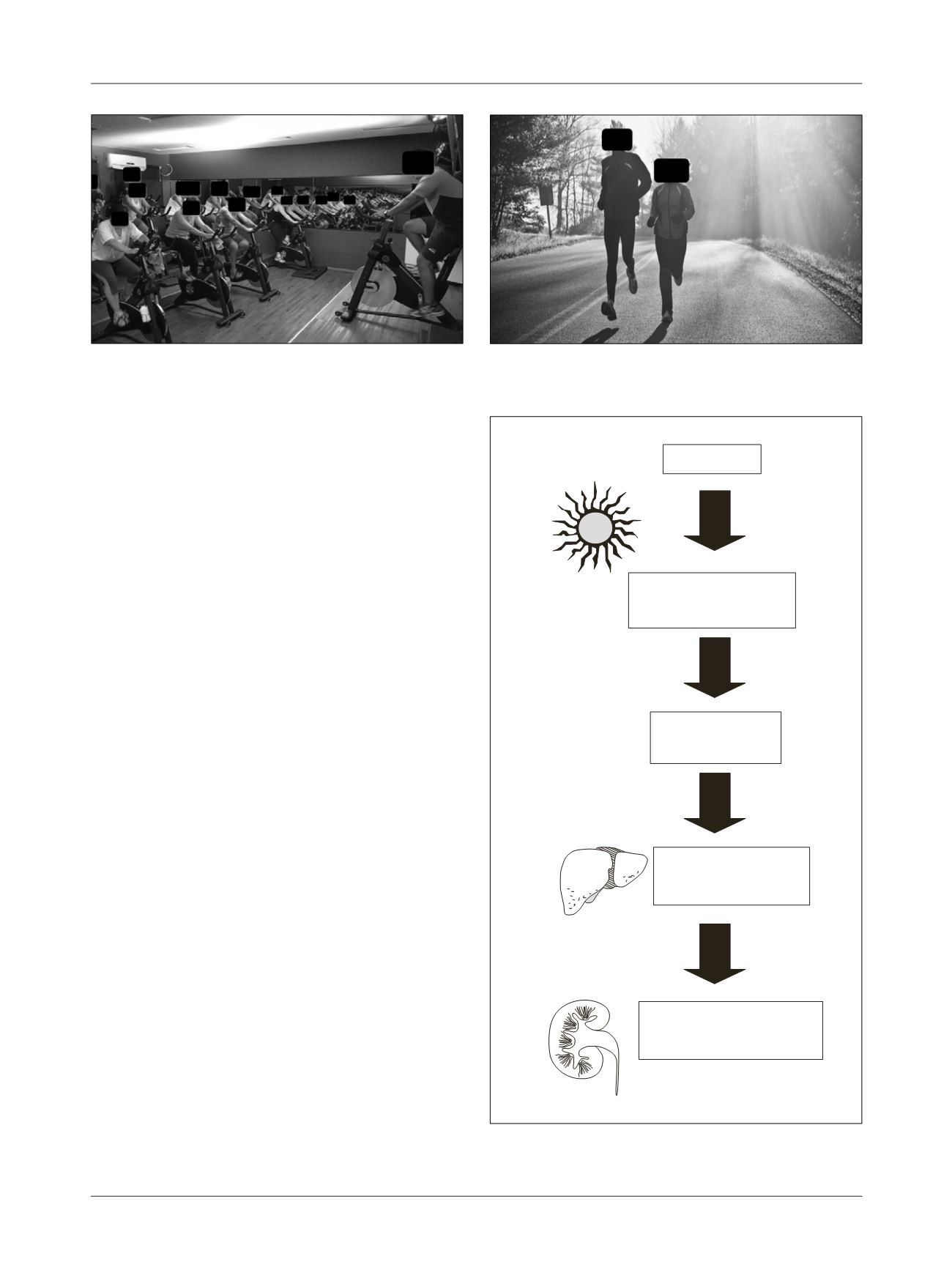

A
ssociation
between
physical
activity
and
vitamin
D: A
narrative
literature
review
R
ev
A
ssoc
M
ed
B
ras
2017; 63(6):550-556
551
V
itamin
D
The needs of the human body, in relation to vitamin D,
are supplied to a lesser extent by the exogenous absorp-
tion of dietary sources: vitamin D2, found in vegetables
and called ergocalciferol, and vitamin D3, of animal ori-
gin, found in fish and called cholecalciferol. But most of
it is endogenously synthesized.
8
Both participate in the same metabolic process. These
forms of vitamin D are produced in the epidermis by
7-dehydrocholesterol photolysis action/reaction.
9
After
synthesis, vitamin D remains inactive, mainly bound to
a vitamin D binding protein and, to a lesser extent, albu-
min, and circulates through the bloodstream until it
reaches the liver. There, it undergoes hydroxylation at
carbon 25, generating 25-hydroxyvitamin D or calcidiol.
It is a rapid process that undergoes little regulation, and
the product is deposited in the reservoir of adipose tissue.
To be active, this vitamin requires participation of the
kidneys and 1-hydroxylase enzyme. Then, vitamin D3
goes back into the bloodstream to the kidneys and, medi-
ated by the enzyme hydroxylase, forms 1,25-dihydroxyvi-
tamin D or calcitriol. This renal action is controlled by
several factors, unlike the previous stage, in the liver, which
is poorly regulated
10,11
(Figure 3).
Vitamin D acts in the control of plasma calcium lev-
els, after its absorption in the intestinal tract, aiding in
the regulation of bone metabolism. It also acts in non-
calcemic effects, such as strengthening the immune system,
improving balance and preventing premature aging.
4
Researchers’ interest in vitamin D has been enhanced
by recent advances related to biology, as it plays an impor-
tant role far beyond calciummetabolism in various extra-
skeletal tissues such as adipocytes, skeletal striated muscle,
and pancreatic tissue. It also participates in the modulation
of immunity and inflammation, which shows its therapeu-
tic potential in diseases such as multiple sclerosis, type 1
FIGURE 1
Indoor physical activity.
FIGURE 2
Outdoor physical activity.
FIGURE 3
Scheme of vitamin D formation.
Skin
7-dehydrocholesterol
Calcifediol or calcidiol
25-hydroxyvitamin D3
Calcitriol
1,25-dihydroxyvitamin D3
Cholecalciferol
Vitamin D3
UV-B Rays
















